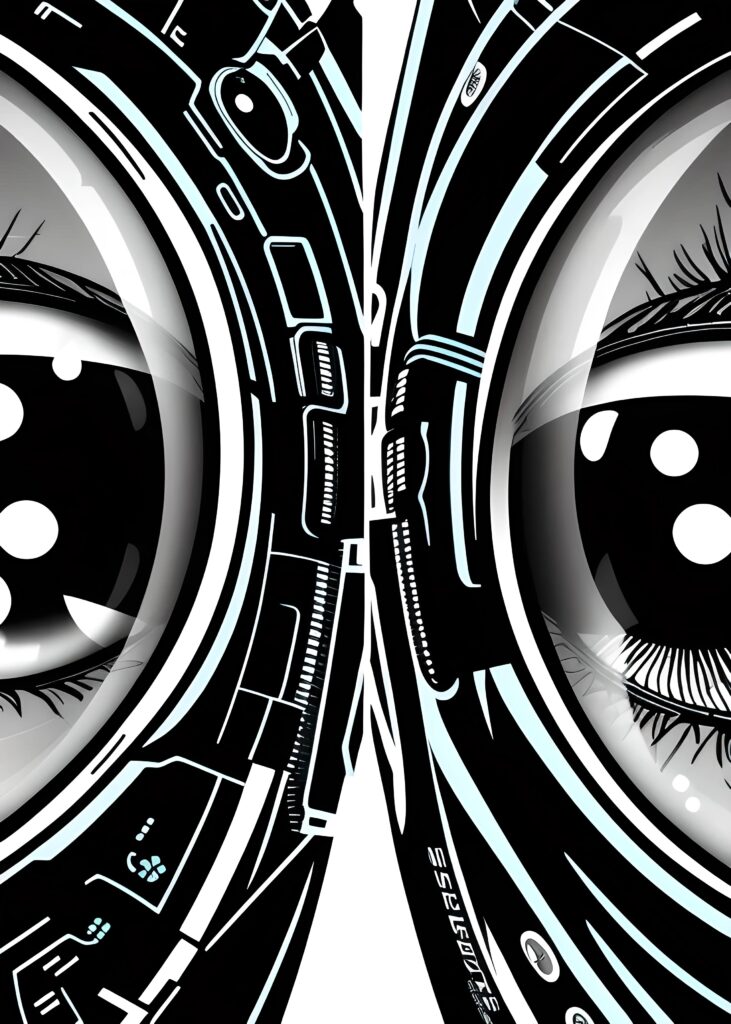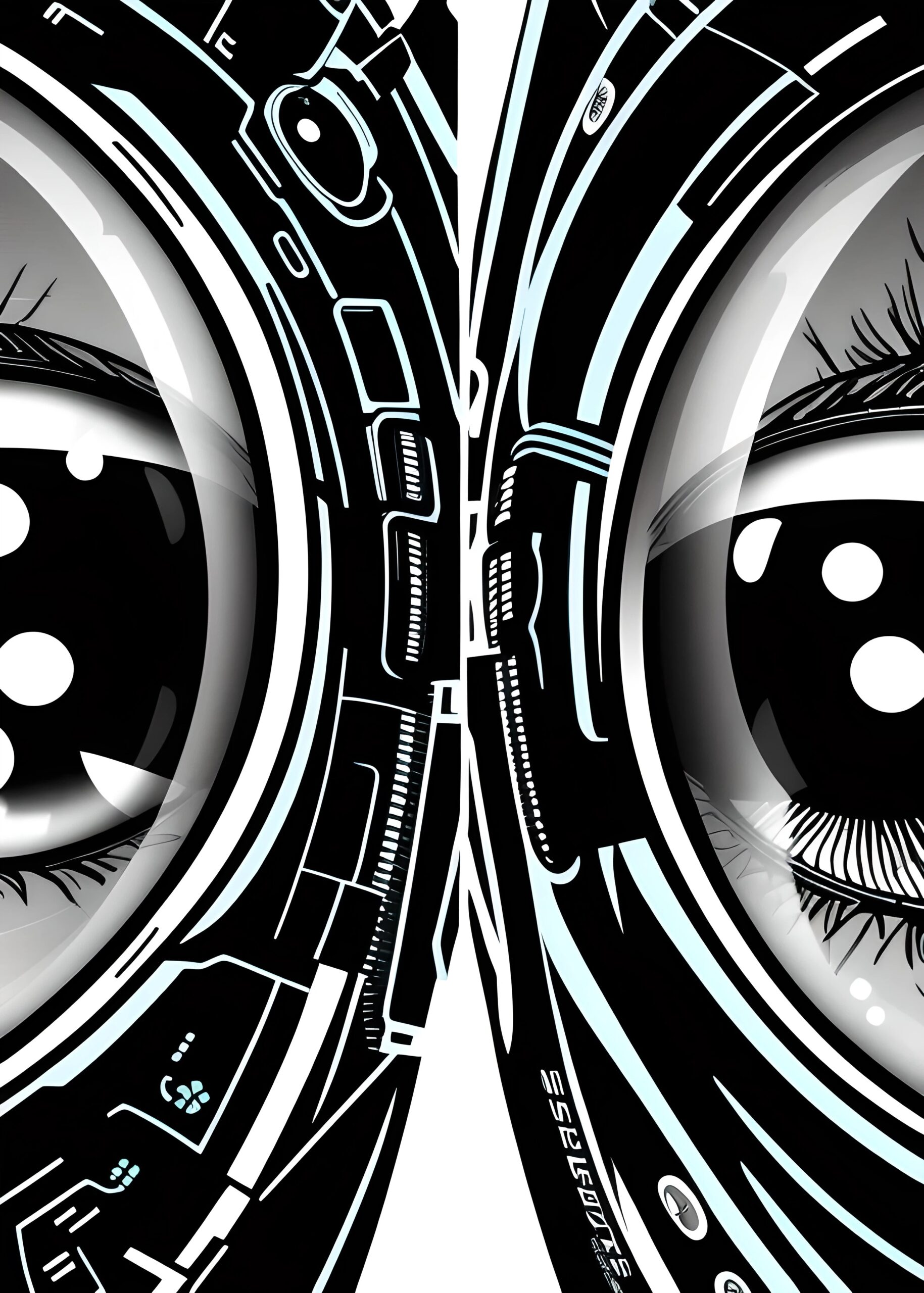
People have been interested in night vision for hundereds of years, from the time when torches and candles were used to the time when night-vision goggles were invented. However, a new product has emerged that could revolutionize the way we see in the dark: night-vision eye drops.
Recent studies show that these drops can make it easier to see up to 50 meters away in the dark. They can be used instead of traditional night vision devices. In this article, we will explore the science behind these night-vision eye drops, their potential applications, and the implications for the future of night-vision technology.
What is Biohacking Night Vision?
Before we dive into the specifics of night-vision eyedrops, let’s take a moment to define what we mean by “biohacking your vision.” Biohacking is the practice of using science, technology, and lifestyle interventions to optimize your physical and mental health. When it comes to vision, biohacking can involve everything from improving the health of your eyes through diet and exercise to using technology like temporary night vision eye drops to treat night blindness.
While studying deep sea fish, researchers by accident discovered night vision eye drops. Scientists noticed that these fish had a unique ability to see in the dark due to a protein called rhodopsin in their eyes. This protein was then isolated and studied, leading to the creation of synthetic versions that can be used in humans.
The military was the first to look into using these drops to improve people’s vision, but it was later found that they could also help civilians in different ways. These drops work by temporarily increasing the sensitivity of the human eye to light, resulting in a unique super vision that can last for several hours.
Understanding Night Vision and Its Importance
Night vision is the ability to see in low-light conditions. This is important because many of our daily activities, such as driving, walking, and even reading, require good vision. If you have poor night vision, you may be at risk of accidents or injuries. Additionally, night blindness, a condition in which a person cannot see in dim light, can be a symptom of underlying health conditions like cataracts or retinitis pigmentosa.
Our eyes need light to see, and in the absence of light, we cannot see at all. However, even in complete darkness, there is still some light present. This is called ambient light, and it can come from sources such as the moon, stars, or even city lights. Night vision technology works by amplifying this ambient light, making it bright enough for us to see.
You can’t say enough about how important night vision is, especially in fields where visibility is key. For example, in military operations, night vision technology allows soldiers to see their surroundings clearly in the dark, giving them an advantage over their enemies.
Similarly, law enforcement officers can use night vision to surveil suspects or track down criminals in the dark. Night vision technology has also been a game-changer for wildlife observation. Many animals are nocturnal, meaning they are active at night. Researchers can watch these animals at night without disturbing them or changing how they normally act.
But night vision isn’t just for the military or wildlife researchers. It can also be useful in everyday situations. For example, if you’re out camping and need to use the restroom in the middle of the night, night vision goggles can help you navigate the darkness safely.
The Science Behind Enhanced Night Vision
So, how do night-vision eyedrops work? The science behind these drops is actually quite simple. The drops contain a chemical called Chlorin e6 (Ce6), which is found in deep-sea fish. Ce6 has been shown to enhance the sensitivity of rod cells in the retina, which are responsible for detecting low levels of light. When applied to the eyes, Ce6 allows for increased light amplification, allowing the user to see in much lower light conditions than they would normally be able to, thereby making it an effective means to treat night blindness.
How Night Vision Eye Drops Work
Night vision eye drops have become a popular topic of discussion lately, with many people wondering how they work. The truth is, night vision eye drops do not actually give you the ability to see in the dark like some sort of superhero. Instead, they work by enhancing the contrast of the images you see, allowing your eyes to pick up on more details in low-light environments.
The way this works is by dilating your pupils, allowing more light to enter your eyes. Additionally, the drops contain a chemical called Chlorin e6, which has been shown to enhance the sensitivity of rod cells in the eye. Rod cells are responsible for detecting light in low-light conditions, so this chemical can help your eyes pick up on more details in the dark.
It’s important to note that these eye drops are not approved by the FDA, and there is limited research on their safety and effectiveness. Some people have reported temporary vision changes, and there is concern that long-term use could have negative effects on the eyes. As always, it’s important to consult with a healthcare professional before trying any new products or treatments.
To use night-vision eyedrops, you simply apply them to your eyes before you need to see in the dark. The drops take about an hour to take effect, so it’s important to plan ahead. Once the drops have taken effect, you should be able to see in the dark for several hours. It’s important to note that the drops do not provide permanent night vision, but rather a temporary enhancement.
The Benefits of Using Night Vision Eye Drops
The benefits of using night-vision eyedrops are clear. They allow you to see in low-light conditions, which can be incredibly useful in a variety of situations. For example, if you’re camping or hiking in the wilderness, you may need to navigate your way around in the dark.
With night-vision eyedrops, you’ll be able to see much more clearly, reducing your risk of accidents or injuries. It is often used to treat eye problems such as night blindness and cancer.
Did you know that scientists have developed a fascinating technique to eliminate tumor cells called photodynamic therapy? This method involves injecting a substance known as Ce6 into a patient’s bloodstream, which specifically targets cancer cells. Once in the bloodstream, the tumor cells are exposed to a laser light of the appropriate wavelength, which kills them off.
It’s been noted that Ce6 has been used in cancer treatment for several years, as highlighted in the SftM report. However, the big question remains – what impact does this have on healthy cells in a human eye?
Who Can Benefit from Using Night Vision Eye Drops?
Anyone can potentially benefit from using night-vision eyedrops. If you have poor night vision or suffer from night blindness, these drops could treat night blindness and be a game-changer for you. Additionally, if you work in a profession where you need to have low light vision, such as law enforcement or security, night-vision eyedrops could be incredibly useful.
Tips for Using Night Vision Eye Drops
If you decide to try night enhancement eyedrops, there are a few tips you should keep in mind. First, be sure to follow the instructions carefully. Apply the drops to your eyes as directed, and give them enough time to take effect. Additionally, be aware that the drops can cause some mild discomfort, such as stinging or burning. This is normal and should go away within a few minutes.
Other Ways to Enhance Night Vision
While night-vision eyedrops are an effective way to improving night vision, they are not the only option. There are several other strategies you can try to improve your night vision, including:
- Getting enough sleep
- Eating a diet rich in vitamin A
- Avoiding bright light exposure before going into the dark
- Using blue-light-blocking glasses to protect your eyes from digital screens
Current Research on Night Vision Eye Drops
While night-vision eyedrops have been around for several years, there is still relatively little research on their effectiveness. However, a few studies have been conducted that suggest these drops could be a useful tool for enhancing night vision.
For example, one study published in the Journal of Biomedical Optics found that Ce6 eye drops improved the ability of participants to identify moving subjects against varying background colors in low-light conditions.
Safety Concerns and Precautions
While night-vision eyedrops are generally considered safe, there are a few precautions you should keep in mind. First, be sure to only use drops that are specifically designed for use in the eyes. Do not use drops intended for other purposes, as they could be harmful.
Additionally, be aware that the drops can cause some mild discomfort, such as stinging or burning. If you experience severe pain or vision changes after using the drops, contact your healthcare provider immediately.
Conclusion
In conclusion, biohacking your vision is a fascinating and potentially useful area of exploration. Night-vision eyedrops are one tool that can be incredibly effective at improving your night vision, allowing you to see up to 50 meters in the dark. While these drops are not a permanent solution, they can be a useful tool for those who need to navigate in low-light conditions. As with any biohacking intervention, it’s important to do your research and consult with a healthcare professional before trying something new.

